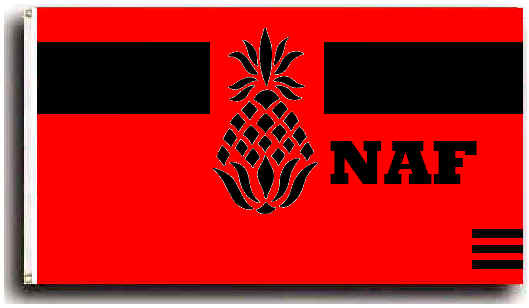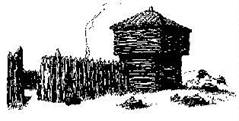
BUCK CONNER
Staff Writer
|
SMOKE SIGNALS ___________________________ EDIBLES - RECIPES - CAMP EQUIPAGE I
started and established
a business for correct period foods and items to prepare
those foods, for the re-enactment movement going on in North America and
Europe back in 1980. Our original store “Buckhorn Rendezvous”, later becoming “Clark & Sons Mercantile” in the 90’s grew into a mail order business named after an old family name that was as old as our country. The family name of Clark has been in American History from the beginning, “from sea to shinning sea”, treading on new ground, always involved and looking for a new venture or adventure. ___________________________ I was looking through some old issues of books related to the historical living history mode and found an article read and forgotten a while back that I had written a reply to the editor. In
the March/April 2002 issue of Muzzleloader.
An article of interest was a letter titled “Canning Canned” by
Frank Bielman; according to medical records on canned meat during the last
part of the “buffalo stands” period - I have read that it was a
question as to what was worst the possible bad meat or the lead soldered
lids and bottoms on the cans that made many company hunters sick. A
small group of us found this very interesting, trying to use edibles as
correctly and true to the period, this has been a hobby as well as a
business when still owning Clark & Sons Mercantile, a period edibles
food supplier now being handled out of Doing
reenactments or historical living history for more years than many of our
readers have been alive, (not bragging - just getting old), may I give you
some more information on the subject of “potted meat”. I
had an older gentlemen (a rancher) tell me about the care of meat before
refrigerators or a warm winter and ice wasn't as thick as usual.
In the fall they would process wild game meat, (cattle were to be
sold to easterners not eaten), this meat would still be edible in the
spring. Here’s what is really interesting, they kept it in pottery
crocks, glass and metal cake pans covered with cheese cloth and stored in
the root cellar. The
secret is they would cook the meat well done, then using rendered hot lard
(liquid form) cover the bottom of the container, next the meat was singly
placed in the container with a covering of lard to seal it from the next
piece of meat being placed as well as not letting the sides of the
container touch the meat either. Each piece is kept completely sealed from
the container and other meat, when meat was needed you would take out what
you wanted wiping off the lard and saving it to be rendered again for use
at a later time. He
claimed it would last at least 5-6 months, this was as late as 1955 near
Loveland CO, they didn't get electricity until 1955 or 1956 in many
farming areas in rural Colorado and Wyoming. For
a 20 year period we have practiced this method of taking care of meat
while moving around the mountains in Colorado. A small group of us started
doing canoe trips back in the mid 80’s, one trip was from Ft. Morgan CO
to Ft. de Chartre IL (60 miles south of St. Louis MO), 1260 river miles.
The venture was done in period dress, food, and mode of transportation,
with no support team - just on our own skills to keep everything moving
forward. For this trek we prepared buffalo, elk, deer and antelope meat,
packed in lard gotten at the local grocery store in TIN containers, the
trip took 28 days, starting in temperatures in the mid 30's and arriving
in IL with temperatures in the mid 80's. We ate the meat every day and
found it was as good the last day as it was the first day. Hope
this adds to your use and thoughts on caring for and preparing your next
meal. Buck Conner
___________________________ Page 3
|



 come warm yourself friends
come warm yourself friends